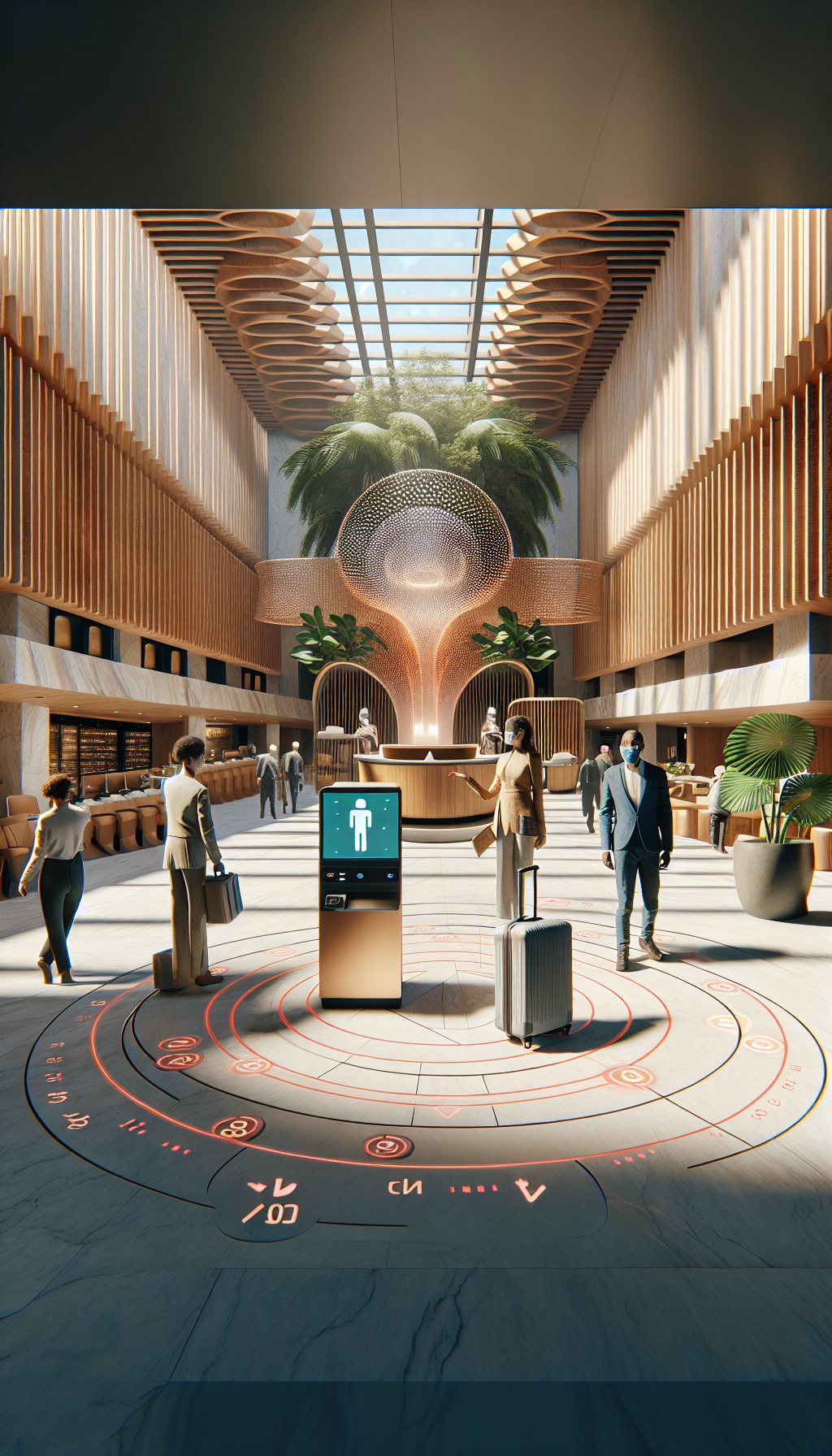Hospitality Reimagined: New Trends in Hotel Design Post-Pandemic
Flexible Spaces
One of the most significant trends in hotel design post-pandemic is the emphasis on flexible spaces. Hotels are increasingly adopting versatile layouts that can easily transform to cater to different guest needs. From multifunctional lobbies that can host meetings or events to adaptable room configurations, this approach allows hotels to maximize their guest capacity while ensuring comfort and safety. The rise of remote work has influenced this trend, with many hotels offering co-working areas equipped with high-speed internet, presentation facilities, and dedicated meeting rooms.
Enhanced Safety Protocols
Safety and hygiene have become paramount in hotel design following the pandemic. Hotels are incorporating advanced technologies—such as touchless entry systems, automatic doors, and voice-activated devices—to minimize contact between guests and staff. Additionally, layouts are reimagined to support social distancing, with spacious seating areas, thoughtful traffic flow design, and strategic placement of hand sanitizing stations throughout the property. Enhanced cleaning protocols are now prominently displayed, reassuring guests of their safety during their stay.
Outdoor Integration
The desire for outdoor experiences has surged, prompting hotels to prioritize outdoor areas. Many are redesigning their spaces to create inviting outdoor lounges, secluded gardens, and terraces that enhance the guest experience. Biophilic design principles—incorporating natural elements into the built environment—are more prevalent, with indoor spaces featuring natural light, plants, and outdoor views. Such designs encourage guests to spend time outside, promoting their well-being while also allowing hotels to reduce indoor density.
Sustainable Practices
Sustainability is at the forefront of hotel design as eco-conscious travelers demand more from their accommodations. Hotels are increasingly utilizing sustainable materials, such as reclaimed wood, bamboo, and recycled metal, in their construction and decor. Energy-efficient lighting, water conservation systems, and green roofs are being integrated to minimize environmental impact. Furthermore, many hotels are adopting waste-reduction strategies and sourcing locally produced food, showcasing their commitment to sustainability while appealing to socially responsible guests.
Technology Integration
The pandemic accelerated the adoption of technology in the hospitality industry, and hotels are now more tech-savvy than ever. From apps that allow for seamless check-in and room controls to AI-powered concierge services, technology enhances the guest experience. Many hotels are investing in high-speed internet and smart technology to meet the demands of tech-dependent travelers. Enhanced in-room technology, such as personalized entertainment systems and smart climate controls, ensures guests have a comfortable and innovative stay.
Wellness-Centric Designs
Wellness has become a priority in hotel design, reflecting the growing importance of mental and physical health, particularly post-pandemic. Hotels are incorporating wellness-focused amenities, such as meditation rooms, yoga studios, and fitness areas with state-of-the-art equipment. Spa facilities are expanding to include holistic treatments that promote relaxation and rejuvenation. Moreover, room designs may emphasize natural light and calming color palettes to foster a peaceful environment, encouraging guests to unwind during their stay.
Localized Experiences
Hotels are increasingly focusing on providing localized experiences that showcase their unique surroundings. This trend involves partnering with local artisans and chefs to create authentic culinary experiences and offering culturally relevant activities that immerse guests in the local fabric. Design elements that reflect the community’s history, art, and culture are woven into the hotel’s aesthetic, allowing guests to connect more deeply with the destination. This approach fosters a sense of belonging and encourages travelers to engage with the local community.
Innovative Room Designs
The traditional hotel room is evolving, with innovative designs catering to the diverse needs of guests. Pod-style accommodations, balconies, and private terraces are gaining popularity, appealing to those seeking privacy and outdoor space. Some hotels are also embracing open-concept layouts, blurring the line between living and sleeping areas for greater flexibility. Guests can expect more thoughtful amenities, such as kitchenettes for longer stays and multifunctional furniture designed for both comfort and utility.
Focus on Community
Another emerging trend is the emphasis on creating a sense of community within the hotel setting. Co-living spaces, communal dining areas, and communal activity zones encourage guest interaction and foster a sense of belonging. This approach is particularly appealing to younger travelers who value experiences over material luxuries. Design elements such as communal fire pits, shared gardens, and interactive art installations are being incorporated to facilitate social connections, ensuring guests feel part of a larger community during their stay.
Emphasis on Personalization
The desire for personalized experiences is driving hotels to reconsider their design strategies. Customizable room features, such as adjustable lighting, fragrance options, and curated mini-bar selections, enable guests to tailor their environment to fit their preferences. Hotels are leveraging data analytics to understand guest preferences better and enhance personalization, ensuring that every aspect of the stay feels uniquely catered to individual needs.
Resilience and Adaptability
In a world marked by uncertainty, the resilience and adaptability of hotel design are more critical than ever. The ability to pivot quickly in response to changing circumstances is shaping the way hotels are being built and redesigned. Modular designs that can evolve with guest preferences or health guidelines are becoming the norm. This flexibility not only ensures ongoing adaptability but also enhances the longevity of hotel investments.
Conclusion
As the hospitality industry embraces the changes brought on by the pandemic, innovative design trends focus on flexibility, safety, and personalization. Hotels are poised to create environments that cater to the evolving needs of travelers while promoting wellness, sustainability, and community connection. By adopting these emerging trends, the hospitality sector is not merely reimagining how to serve guests but redefining the entire travel experience in a post-pandemic world.

